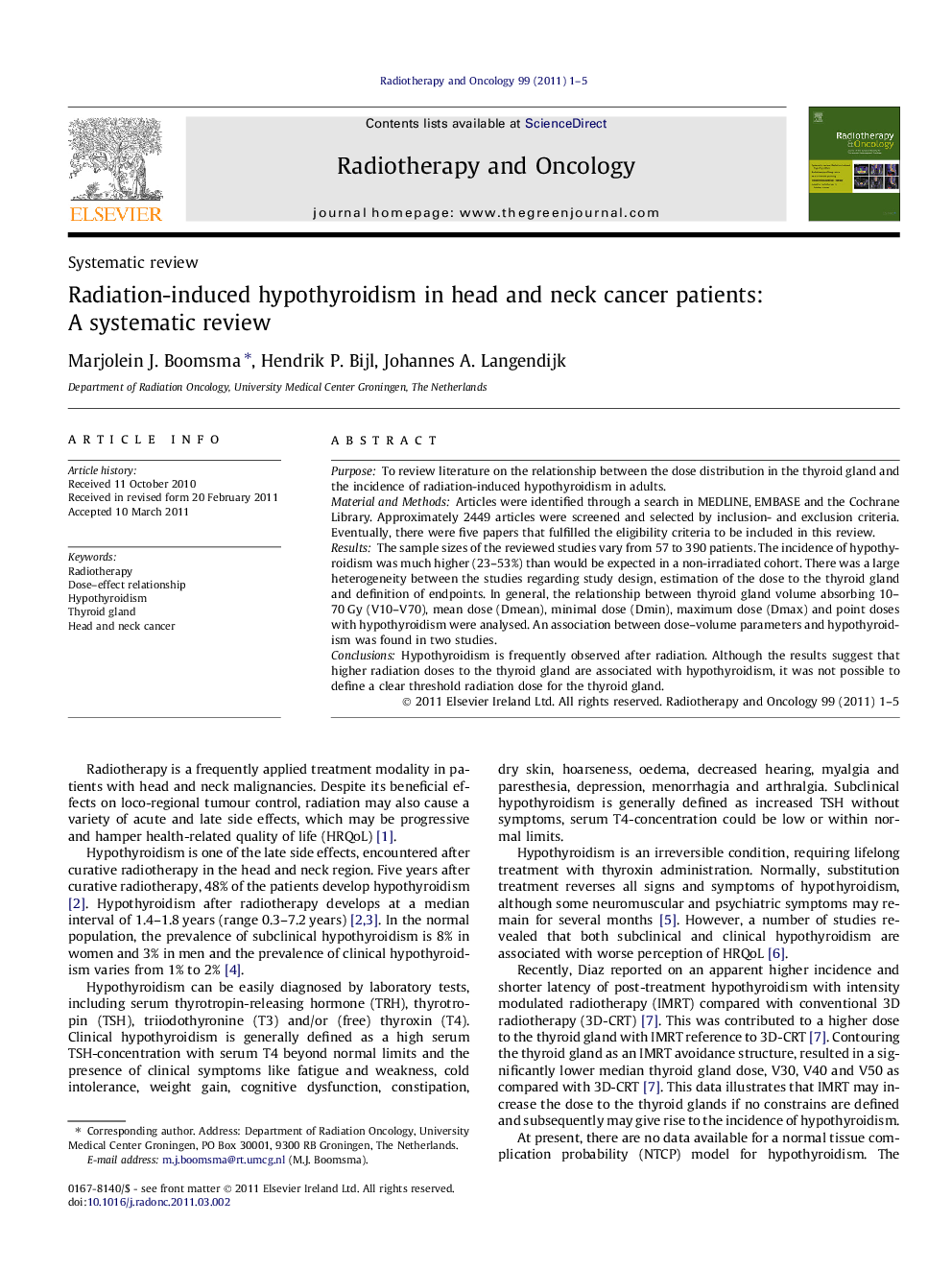| Article ID | Journal | Published Year | Pages | File Type |
|---|---|---|---|---|
| 2158595 | Radiotherapy and Oncology | 2011 | 5 Pages |
PurposeTo review literature on the relationship between the dose distribution in the thyroid gland and the incidence of radiation-induced hypothyroidism in adults.Material and MethodsArticles were identified through a search in MEDLINE, EMBASE and the Cochrane Library. Approximately 2449 articles were screened and selected by inclusion- and exclusion criteria. Eventually, there were five papers that fulfilled the eligibility criteria to be included in this review.ResultsThe sample sizes of the reviewed studies vary from 57 to 390 patients. The incidence of hypothyroidism was much higher (23–53%) than would be expected in a non-irradiated cohort. There was a large heterogeneity between the studies regarding study design, estimation of the dose to the thyroid gland and definition of endpoints. In general, the relationship between thyroid gland volume absorbing 10–70 Gy (V10–V70), mean dose (Dmean), minimal dose (Dmin), maximum dose (Dmax) and point doses with hypothyroidism were analysed. An association between dose–volume parameters and hypothyroidism was found in two studies.ConclusionsHypothyroidism is frequently observed after radiation. Although the results suggest that higher radiation doses to the thyroid gland are associated with hypothyroidism, it was not possible to define a clear threshold radiation dose for the thyroid gland.
